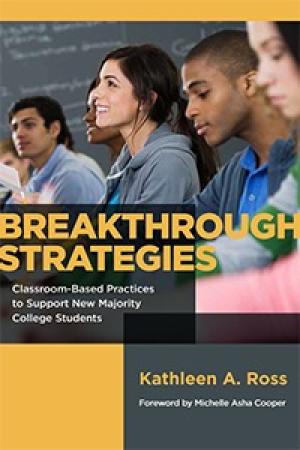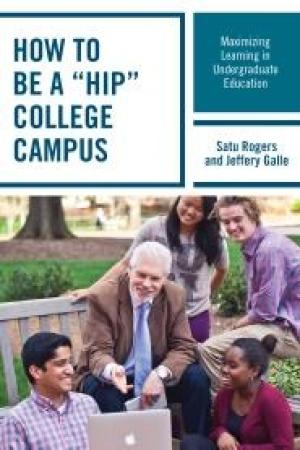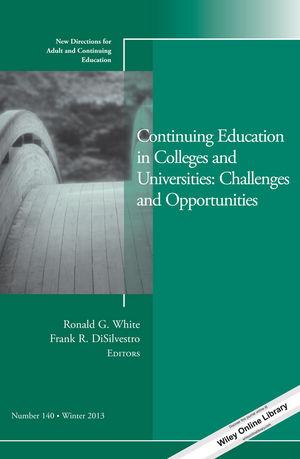Resources by William P. McDonald

This book is about preparing for a future already dawning on North American college campuses, a future belonging to “New Majority” (NM) students. Ross describes NM students as Latino/a, African-American, Southeast Asian, Pacific Islander, first generation, and low income. Evidence of NM students is statistically demonstrable, as with the 50% rise of Pell Grant applicants between 2002-13. Demographic surges suggest a “majority-minority” U.S. by 2050. These students often have an educational disadvantage, met in some places with "bridge programs" or other efforts to bolster their success. But is more needed? Are faculty aware and equipped enough to serve NM students, or will faculty continue to be befuddled when students do not speak up in class or react to assignments and grades in unexpected ways? This book addresses these issues by introducing professors to NM students so that they can better understand the cultural cues and expectations these students bring. Part I, "Strategies for Engagement," assesses ways of keeping students engaged, but with special attention to issues NM students face. Chapters begin with classroom vignettes that set up the problem the chapter addresses. Students may disengage because of “stereotype threat,” a socio-psychological phenomenon described in chapter four. Professors best confront this stereotype by bolstering self-confidence while pushing students to engage subject matter more deeply. Students are reluctant to ask questions in class not because they are uninterested, but because they fear sounding ignorant or come with cultural traditions of deference that discourage public questioning. This mismatch of expectations between teacher and students can be confronted through strategies presented in chapter five. Taken for granted as a privileged space with its own practices, the college classroom is strange new territory for NM students. Six chapters in parts II and III introduce strategies that build inclusion and confidence. For instance, NM students benefit from classroom cultures built around interdependence and teamwork rather than individual achievement, which can be perceived as selfish and disloyal in some minority communities. Journaling is another strategy that invites NM students to deeper reflection on a subject and builds connection with the instructor. It helps to overcome the assumption that learning is simply mastery of information delivered through lectures, as opposed to personal discovery and evaluation. Journaling is an important ingredient in the wider purpose of creating leaders for minority communities who produce personal observations, share insights, and opinions with confidence, contributions which are valuable not only for minority communities but also for the wider society in which they will participate. NM students will graduate and enter a workforce where they will continue to face debilitating stereotypes (the final chapter’s opening vignette is about Gabriela, a Latina architecture student who faced negative stereotyping on her first day). College classrooms should be spaces of empowerment for these students so they can begin building a professional identity during their educational experience. Professors can facilitate this with frank discussions of stereotypes NM students will face, by sharing stories of role models, and by cultivating good practices in communication and self-presentation. This book will sensitize faculty to the needs of this growing part of the student body. However, much of the information is applicable to students from all backgrounds, and will improve college teaching for all involved.

Outcomes-based learning invites the question of how to best produce them, and this book introduces the reader to seven high-impact practices (HIPs), namely high expectations, close and frequent student-faculty interaction, effective teaching strategies, undergraduate research, collaborative learning, service learning, and diversity. Chapters are organized around these seven features. The authors use their own school, Oxford College of Emory University, as a test case for their hypothesis that these features provide the best means for student success as measured in desire to continue learning, graduation rate, STEM interest, and community engagement. Institutions promoting HIPs provide intentional support to their students for these practices, cultivate diversity, and blur the boundaries between classroom and extracurricular life. The book is seasoned with excerpts from faculty and student interviews and almost constant reference to the last thirty years of research on academic practice. High expectations are created in classroom synergy between students and instructors, where instructors lead students in exploring beyond the basic subject information students are expected to learn on their own. Students report appreciation for being pushed beyond introductory knowledge and for gaining the self-knowledge that they underestimate their own learning capacities, something they would not have learned without high expectations. High expectations are successful when students have more opportunities to interact with faculty. This works best at smaller institutions and requires the institution’s support to work. While faculty report that interaction helps them tailor their instruction to students’ needs and abilities, they also caution against an over-customization that reduces a subject’s breadth and prevents students from being challenged by new and unfamiliar material. As expected, high-impact teaching calls for active learning techniques, with fourteen such practices – called “Inquiry Guided Learning” – described in the third chapter. Among them are student discovery (as in problem-solving), systematic construction of knowledge, cross-disciplinary integration, addressing misconceptions, creating surprise in the classroom, and using mistakes strategically. These practices are not formulas set forth by the authors but were derived from student-faculty conversations about good teaching at Oxford College. The reader looks in vain, however, for the redemption of the lecture as a component in active learning. In any case, faculty are advised to use practices that fit their personality and their discipline; some fit better than others. Collaborative learning is enhanced through student research projects, which should be found across the disciplines (STEM fields have done the best job here). Such learning is best coupled with collaborative leadership in student life activities. The greater benefit accrues the less division there is between a campus’s academics and student life. Students learn leadership skills and gain confidence if collaboration with their peers is encouraged in both areas. Service learning includes collaboration and moves students beyond mere cognition to an experience the authors describe as spiritual and aimed at the “whole student.” And, the more diverse a campus, the better the outcome of any sort of collaborative activity. The conclusion offers readers ways and means of implementing these HIPs on their own campuses. Flexibility and adaptation are key, and in the process, more HIPs may be devised from conversations among all parties in different campus contexts.

That continuing education (CE) was only recently added to many traditional programs makes it understandable that it has still to gain the respect of some departments in many colleges and universities. Certain trends – well-outlined in this book – have brought CE to the fore in the academy, and readers who have not recognized these trends will have to account for their institutions’ tardiness in catching up. Ten essays chart these developments, each exploring some facet of the CE phenomena. The essays are more practical than speculative; they orient the reader to relevant knowledge about current trends and how best to implement a state-of-the-art CE program. The economy and the technological boom are the major incentives for CE development, and the implications each has for such programs are well-covered in the essays. While disposable income has made CE attractive for the self-enrichment of a healthily aging population, retooling the present workforce to adapt to a changing economy indicates a significant need and opportunity for business and academia, respectively. Hence, CE’s profitability must be considered more closely, advantageous as it is for revenue-conscious higher education. Lisa Braverman’s essay explains why educators do well to note business practices (sometimes a loathed subject in academia), demographics, marketing, and innovation when designing CE programs. Nontraditional students will only increase in the near future, and effective marketing of CE will require innovation and nuance since marketing to nontraditional learners in the workforce differs significantly from traditional recruitment. To this end, some schools have enhanced their CE marketing departments, realizing that sophisticated use of social media and a better understanding of adult learners’ needs are more effective than the former “one size fits all” modes of recruitment based on criteria geared toward traditional students. Rebecca Nichols’s article addresses the role of the community college as a partner in economic development. Not only do these schools meet needs in retooling the workforce, but they also play a role in creating jobs. To this end, Nichols offers seven examples of innovative community college programs around the country. The essays acknowledge online education as the greatest recent innovation affecting CE. While nontraditional students continue to prefer brick-and-mortar campuses, they are opting for online education (38 percent by one survey) for its efficiency, a trend productive of increased revenue streams but one yet to gain more widespread acceptance and improvement of delivery. MOOC impact is considerable and is discussed in several of the essays. Another specific factor for CE is “Prior Learning Assessment” (PLA), or the acceptance of work and life experience (such as military service) in addition to or in lieu of “seat time” credit hours. While this practice is not new, Rebecca Klein-Collins and Judith B. Wertherin argue that it is fueled by adult learners’ need to complete a degree quickly and to attract older workers. Left unanswered are questions about the merit of “life experiences” that cannot be readily measured in any way equivalent to classroom assignments. Successful CE programs require the cooperation and understanding of their sponsoring institutions even as these programs keep in line with institutional missions. They also build lasting relationships with regional business, industry, and other entities requiring employees to keep updated certification. Such are the challenges and opportunities before CE programs everywhere.